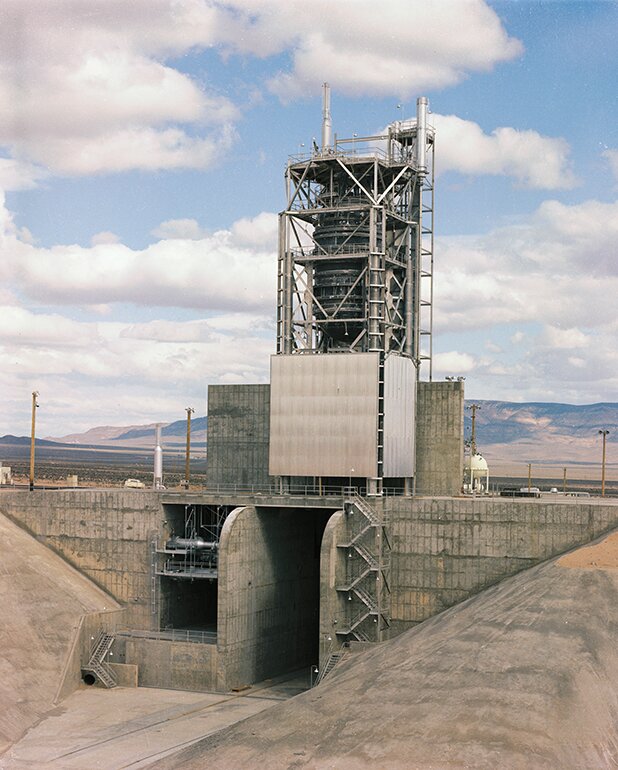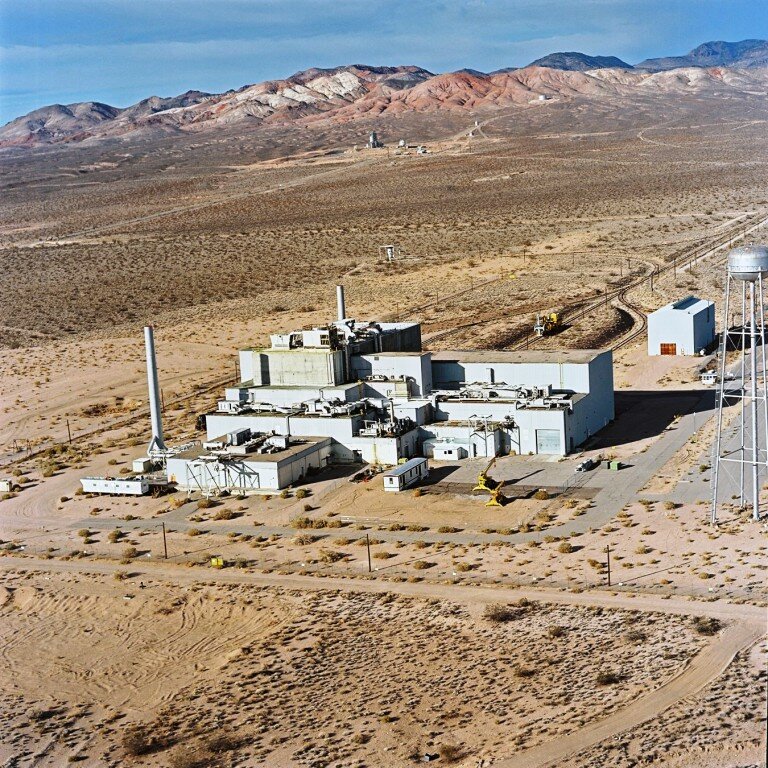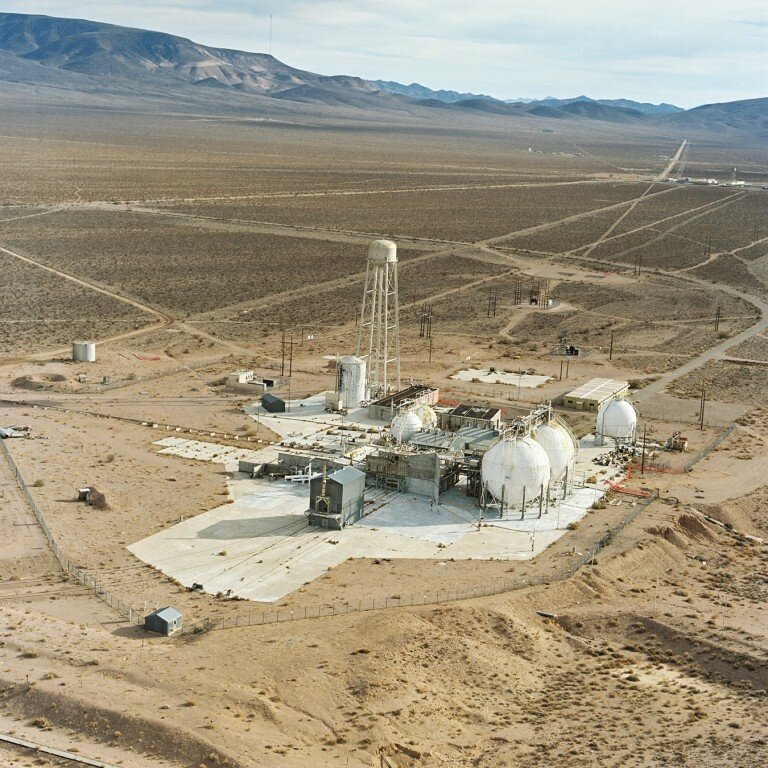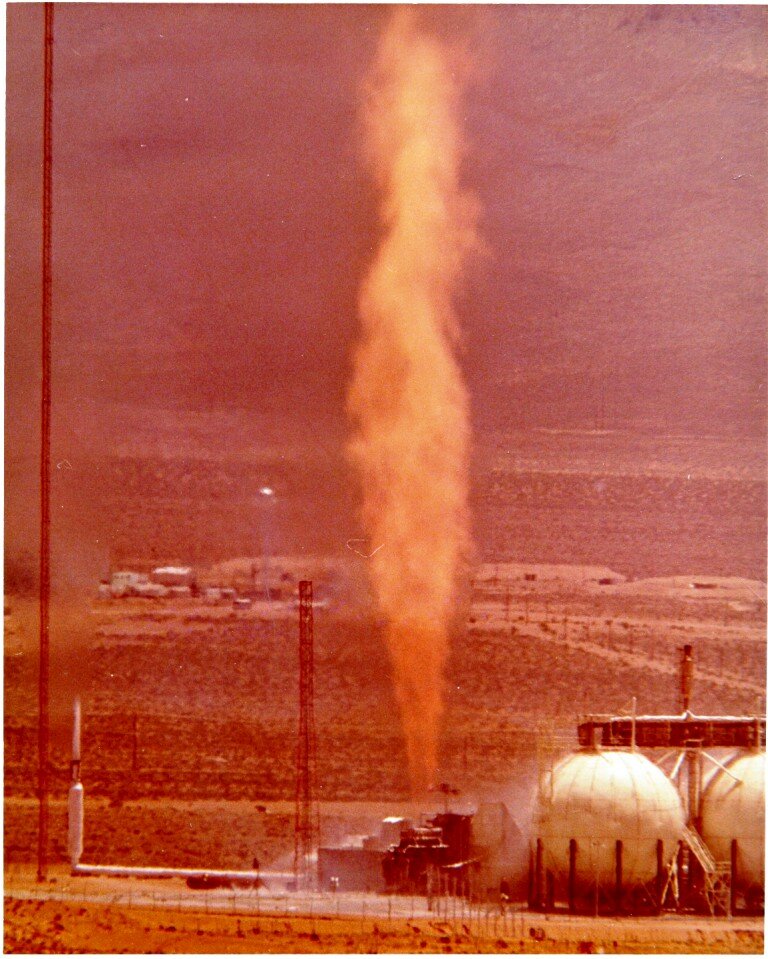New Mars Forums
You are not logged in.
- Topics: Active | Unanswered
Announcement
#1 2017-02-14 13:35:49
- Oldfart1939
- Member
- Registered: 2016-11-26
- Posts: 2,484
Mars and Beyond--the next steps outward in exploring our Solar System?
Those active within this group seem to be a bunch of creative free-thinkers, so I'm posing this question as some "brainteaser/brain candy." last night I again immersed myself in Robert Zubrin's Entering Space while looking for some data regarding delta V required for exiting LEO in the ballistic trajectory to Mars.
So, it really hit me that as long as we're limited to chemical rocketry using even the BEST propellant systems, after Mars, we're kinda' stuck. The asteroid belt would be within reason, so Ceres and Vesta would become logical exploration targets, in addition to asteroid mining activities. Even then, the transit times in the void beyond Mars become horrifyingly dramatic, if just methylox or even hydrolox systems are contemplated. I find Ceres scientifically interesting, but would be similar in scope to Antarctica in it's overall appeal as a place to live and work. I haven't researched Vesta yet, but I'm guessing that it's a "nice place to visit, but I wouldn't want to live there."
The next stage outward would be Callisto, the 4th Galilean Moon of Jupiter; Ganymede is probably habitable, but fraught with a low level radiation issue due to it's position right at the outer edge of the Jovian Van Allen belts. Callisto has been described in the literature as possibly the most desolate place in the solar system, and has more meteoric impact craters than anywhere else examined to date. The major problem regarding Callisto is the travel time getting there and getting back within a lifetime, if limited to chemical propulsion.
We've been carping around on this website about the shortcomings of NASA, so we should maybe start agitating for resurrection of the NERVA program? Granted, Nuclear Thermal Propulsion is not the long-term answer to the problem, but it IS a demonstrated practical "next step" in the journey outward to the stars. It would tend to make the asteroids and the Jovian moons accessible within average lifetimes.
Offline
Like button can go here
#2 2017-02-14 13:53:54
Re: Mars and Beyond--the next steps outward in exploring our Solar System?
Clearly, at some point we will have to have something more powerful than chemical propulsion. In a few years we will see what reusable rockets do to the cost of access to low Earth orbit and at that point we'll have a better idea when chemical will no longer be sufficient. If Musk and Bezos can lower the cost of access to orbit as much as they think, it will be feasible to travel to Jupiter in about a year using chemical propulsion. The New Horizons spacecraft left Earth at about 36,000 miles per hour--11,000 mph faster than escape velocity--and reached Jupiter in I think 13 1/2 months. That's twice as long as a typical flight to Mars and should be feasible for astronauts. Once at Callisto, however, they'd have to manufacture their return fuel from water using a nuclear reactor.
Musk was talking about flights to Mars in as little as 30 days using methane and oxygen propulsion. It took New Horizons over 2 months to pass the orbit of Mars, so a velocity of that sort would get crew to Callisto even faster.
Coming back to Earth from Jupiter in some ways is easier, because you can use the moons to dive very deep into Jupiter's gravity well (if you have very good radiation shielding!) and very close to Jupiter, a small excess velocity produces a very large velocity over jovian escape velocity. Similarly, firing your engine close to Jupiter allows you to go into orbit around the planet more easily, and you can plan billiards with the moons to change your orbit and intercept Callisto.
Even with gaseous core nuclear engines, Uranus and Neptune will take a LONG time to reach; at least 2 or 3 years. I assume if anyone goes to those planets, they will go in large ships carrying small colonies with plans to stay a long time.
Offline
Like button can go here
#3 2017-02-14 14:03:52
- RobertDyck
- Moderator
- From: Winnipeg, Canada
- Registered: 2002-08-20
- Posts: 8,231
- Website
Re: Mars and Beyond--the next steps outward in exploring our Solar System?
If you really want something dramatic, if you really want to "change paradigm", then look at Gas Core Nuclear Rocket (GCNR). This was studied theoretically by NASA's advanced propulsion group. There are various lame part-way solutions, but the ultimate is open-cycle gas core. NASA estimated it would have 9,000 second specific impulse, which equals the best electrical propulsion, but with thrust as powerful as chemical rockets. It gives you everything. The catch is fission fragments aka high-level nuclear waste is included in exhaust. Solid core nuclear rockets contain their fuel and fission fragments, so as long as the reactor is designed properly you don't have to worry. However, a gas core nuclear rocket cannot be operated within the atmosphere. Radiation would be *WAY* too high. So that raises the question how to test it? There have been suggestions such as using a cave to contain exhaust, but natural caves usually have cracks that could leak.
Note: the hotter you run a nuclear rocket, the higher Isp. NERVA in 1974 achieved 825 seconds, a theoretical study of NERVA in 1990 calculated 925 seconds. They were able to do that with new materials that could operate hotter. So engineers deliberately designed a nuclear rocket to melt the core. Then they went further, designed one to operate even hotter: gas core.
You can operate a GCNR in space because there's so much radiation there already that the exhaust from this rocket is like adding a teaspoon of water to the ocean. And solar wind will blow that radiation out of the solar system.
Under the Constellation program, NASA built a test stand at Stennis to test the J-2X engine at pressures that simulate the upper atmosphere where that engine will operate. This allows engineers to test the engine in realistic conditions, but keep their hands on the engine so they can examine it and fix anything that goes wrong. The A-3 test stand was completed, but never used. Press criticized NASA and Congress for completing it after the decision was made to use RL10-C engines instead. However, think this would be ideal to test GCNR. The A-3 test stand contains rocket exhaust to maintain near-vacuum while it operates, contains that exhaust in tanks. That could contain radioactive exhaust.
Offline
Like button can go here
#4 2017-02-14 14:16:54
- Oldfart1939
- Member
- Registered: 2016-11-26
- Posts: 2,484
Re: Mars and Beyond--the next steps outward in exploring our Solar System?
Robert-
It would seem to me the Moon would make a great place for a Gas Core test site! No atmosphere; no one else around to complain! I suspect that chemical propulsion will be around for a long time, just getting any space vehicles out of the atmosphere. This is just about the only reason I could support (other than military/strategic bases) for lunar development.
But--the "how do we get there" definitely precedes in thinking of "where do we go next."
Offline
Like button can go here
#5 2017-02-14 14:20:34
- RobertDyck
- Moderator
- From: Winnipeg, Canada
- Registered: 2002-08-20
- Posts: 8,231
- Website
Offline
Like button can go here
#6 2017-02-14 16:07:22
- Terraformer
- Member
- From: The Fortunate Isles
- Registered: 2007-08-27
- Posts: 3,984
- Website
Re: Mars and Beyond--the next steps outward in exploring our Solar System?
For the moment - despite my desire to establish my claim on Ceres - I think we should focus on developing the Three Worlds of Humanity: Terra, Luna, and Mars, plus the two Martian moons and some of the NEAs between Mars and Terra. We can do that with chemical propulsion, but I'm hoping we'll get experience using solar thermal, solar electric, solar sail, beamed propulsion etc as well.
Chemical *could* get us out to Jupiter, and around the asteroid belt, if we really pushed it and made maximum use of gravitational flybys. However, I think we're going to want something more powerful. Solar isn't going to cut it, so if we don't have access to nuclear power - which isn't unlikely, if it's being done privately; good look getting the governments to let you launch nuclear reactors - we'll need beamed propulsion. Microwave sails, perhaps, or microwave electric. A receiver for the microwaves shouldn't be excessively big - ground based ones for space solar power are supposed to have 1 kW/m^2, so a 10,000 m^2 one would get 10 MW. If we had a 100% efficiency for collection and our drive, and had a craft 100 tonnes total, and aimed for an exhaust velocity of 10 km/s, then the equation Power = 0.5*Thrust*Vex gives us T = 2e7/1e4 = 2000 N, or an acceleration of 0.02 m/s^2. That's 72 m/s/hr, or ~1.7 km/s/day. Over a couple of weeks, that adds up. Obviously you wouldn't get 100% efficiency, but you can always add more receivers, or increase the flux. Ignoring the inefficiencies, if you can get 10x the power for the same mass, you could accelerate 2.5x faster with double the Isp.
Use what is abundant and build to last
Offline
Like button can go here
#7 2017-02-14 17:40:17
- Oldfart1939
- Member
- Registered: 2016-11-26
- Posts: 2,484
Re: Mars and Beyond--the next steps outward in exploring our Solar System?
The only way I see getting to the outer solar system reasonably is through use of Nuclear Thermal units, especially the gas phase ones described by Robert.
Offline
Like button can go here
#8 2017-02-14 18:43:14
- kbd512
- Administrator
- Registered: 2015-01-02
- Posts: 8,291
Re: Mars and Beyond--the next steps outward in exploring our Solar System?
Oldfart1939,
The only way I see us getting to the outer solar system in our lifetime is with electromagnetic or gravity drive systems. If GCNR's were flight ready today, the propulsion requirements to send humans to the outer planets and return them to Earth are near the limit of what the most advanced nuclear fission propulsion systems could reasonably deliver.
Offline
Like button can go here
#9 2017-02-14 18:57:29
- Oldfart1939
- Member
- Registered: 2016-11-26
- Posts: 2,484
Re: Mars and Beyond--the next steps outward in exploring our Solar System?
But...they aren't are they?
Offline
Like button can go here
#10 2017-02-15 12:25:05
- elderflower
- Member
- Registered: 2016-06-19
- Posts: 1,262
Re: Mars and Beyond--the next steps outward in exploring our Solar System?
I don't believe any humans will get to the outer solar system in my lifetime- I don't expect to live anything like that long. I want to see people on Mars, the moon and maybe the odd asteroid and these are feasible using available technology or with minimal development.
In that statement about technology I would include nuclear thermal propulsion. It was demonstrated years ago and would take relatively little work to update an engine that would give Isp approaching 1000. That would get you many more tons from earth orbit to Mars orbit and back than a chemical machine.
If it were fuelled with thorium it would be less objectionable from the proliferation control point of view than the alternatives, so developing it and getting it into orbit would not meet insurmountable objections.
Offline
Like button can go here
#11 2017-02-15 12:47:26
- Oldfart1939
- Member
- Registered: 2016-11-26
- Posts: 2,484
Re: Mars and Beyond--the next steps outward in exploring our Solar System?
When earlier I spoke about lifetimes, I meant the lifetimes of the astronauts. No one would really want to spend 3 years going to a destination, then stay a while to do science, and return for another 3 years. That's just too big a chunk of the normal human lifetime to invest on a project.
Some of the information presented here regarding gas phase nuclear propulsion could cut a mission time span to a total of 5-6 years to Callisto and the 2 major asteroids, Vesta and Ceres. Beyond Jupiter is going to require a more advanced propulsion system. I don't anticipate using light sails and lasers, or electromagnetic propulsion to do so, simply due to the enthalpy requirements. Zubrin points that out in "Entering Space." The next step outward will require thermonuclear propulsion, which could also lead to interstellar travel.
Chemical propulsion as some have pointed out, can get us to Mars and the asteroids as well as back to the Moon. Beyond that--requires an entirely new paradigm.
Offline
Like button can go here
#12 2017-02-15 12:51:00
- Oldfart1939
- Member
- Registered: 2016-11-26
- Posts: 2,484
Re: Mars and Beyond--the next steps outward in exploring our Solar System?
To qualify one of my above statements to temper it a little: going to Mars, which is habitable, will allow some to make it their home and not as part of a "mission. That's more like pulling up stakes here on the Earth and getting in a rocket powered Conestoga Wagon and heading West. I could even consider doing that at my tender age of 78.
Offline
Like button can go here
#13 2017-02-15 13:24:36
- GW Johnson
- Member
- From: McGregor, Texas USA
- Registered: 2011-12-04
- Posts: 6,045
- Website
Re: Mars and Beyond--the next steps outward in exploring our Solar System?
A suggestion: since near-term there is only chemical, solid core nuke, and nuke or solar electric propulsion, we can get to the main belt asteroids with some combinations of these, with round trips under 5 years.
To go further, consider spending about 10 years updating and proving out nuclear explosion propulsion. That can take men to the outer solar system, in ships big enough for 5+ year missions, big enough for radiation shielding, and big enough for rifle-bullet style spin gravity.
Also to go further, consider spending about 10 years proving out that gas core nukes can really be built, and proving one out well enough to use. At least part of the outer solar system becomes available with this, and in smaller ships than pulse propulsion requires.
Such propulsion requires testing to develop, and I don't mean flight testing. You need a static test facility to do this, something you simply cannot have hanging around in space. Nuke plumes are dangerous down here, or else at least difficult to contain and dispose of. So, do this kind of work on the moon instead. Close enough to reach with what you have. Far enough away to be safe.
GW
Last edited by GW Johnson (2017-02-15 13:25:33)
GW Johnson
McGregor, Texas
"There is nothing as expensive as a dead crew, especially one dead from a bad management decision"
Offline
Like button can go here
#14 2023-09-18 06:56:19
- Mars_B4_Moon
- Member
- Registered: 2006-03-23
- Posts: 9,776
Re: Mars and Beyond--the next steps outward in exploring our Solar System?
Mining at Ceres, the Moons of Saturn, beaming energy from Mercury, floating Venus Balloon city, perhaps stations at L points, colony at Moons of Jupiter
The Nuclear Thermal Rocket That Could Get Us to Mars in Just 45 Days
https://www.popularmechanics.com/space/ … n-45-days/
NASA and ESA soon at Jupiter's Moons
What will Europa Clipper do?
https://europa.nasa.gov/mission/about/# … ns-phase-d
from July, Two more ESAJuice instruments are working in space and have delivered their first data
https://twitter.com/ESA_JUICE/status/16 … 5094959104
Offline
Like button can go here
#15 2023-10-20 14:47:57
- Mars_B4_Moon
- Member
- Registered: 2006-03-23
- Posts: 9,776
Re: Mars and Beyond--the next steps outward in exploring our Solar System?
not sure if this video was made by AI
Colonization of Callisto-NASA Study
https://www.youtube.com/watch?v=QG-8jZs_27g
11 ton Nuclear Reactor 1 km away
'Revolutionary Concepts for Human Outer Planet Exploration (HOPE)'
https://ntrs.nasa.gov/citations/20030063128
The Chinese have also expressed interest in the Moon's of Jupiter
Last edited by Mars_B4_Moon (2023-10-20 14:49:56)
Offline
Like button can go here
#16 2023-11-01 04:23:06
- Mars_B4_Moon
- Member
- Registered: 2006-03-23
- Posts: 9,776
Re: Mars and Beyond--the next steps outward in exploring our Solar System?
In the past the US space program, the Russian space program, the Chinese space program have all taken people from the Airforce it makes sense to have a pilot and I expect India's ISRO to do the same. However for long term stay and colony building, perhaps other people will arrive now that Private Space flight is here, the life of a research person at the South Pole or the Submariner more suitable for long duration missions?
Ganymede the bigger of the Moons but Callisto is less radioactive
'Salts and organics observed on Ganymede's surface by NASA's Juno'
https://phys.org/news/2023-10-salts-gan … -juno.html
Juno flew over Ganymede at a minimum altitude of 650 miles (1,046 kilometers) and the visual of Jupiter is also very impressive
The music in the NASA video is by Vangelis or Evangelos Odysseas Papathanassiou, a Greek keyboardist, composer, he died in May 2022.
Offline
Like button can go here
#17 2023-11-01 05:28:47
- Calliban
- Member
- From: Northern England, UK
- Registered: 2019-08-18
- Posts: 4,178
Re: Mars and Beyond--the next steps outward in exploring our Solar System?
Previous modeling of Ganymede's magnetic field determined the moon's equatorial region, up to a latitude of about 40 degrees, is shielded from the energetic electron and heavy ion bombardment created by Jupiter's hellish magnetic field. The presence of such particle fluxes is well known to negatively impact salts and organics.
This makes the equatorial band the best place to build a future base. Previous dose estimates for Ganymede for an unprotected human were 8 rem (80mSv) per day. That would make EVA difficult, as suits would need some shielding. But is that figure an average for the whole surface or is it a dose rate in the equatorial band, which is shielded?
The JIRAM data of Ganymede obtained during the flyby achieved an unprecedented spatial resolution for infrared spectroscopy—better than 0.62 miles (1 kilometer) per pixel. With it, Juno scientists were able to detect and analyze the unique spectral features of non-water-ice materials, including hydrated sodium chloride, ammonium chloride, sodium bicarbonate, and possibly aliphatic aldehydes.
The presence of ammonium compounds makes like appear less likely. If this was primordial ammonia, then any livihg things in the ocean should have metabolised it into proteins 4.5 billion years. We won't actually know until people go there and start slicing up ice cores and putting them under electron microscopes. I doubt that will happen in any of our lifetimes.
Last edited by Calliban (2023-11-01 05:36:58)
"Plan and prepare for every possibility, and you will never act. It is nobler to have courage as we stumble into half the things we fear than to analyse every possible obstacle and begin nothing. Great things are achieved by embracing great dangers."
Offline
Like button can go here
#18 2024-04-20 02:15:14
- Mars_B4_Moon
- Member
- Registered: 2006-03-23
- Posts: 9,776
Re: Mars and Beyond--the next steps outward in exploring our Solar System?
Asteroid debris from NASA's successful DART mission may strike Mars
https://www.earth.com/news/space-rocks- … pact-mars/
'Mars vs Moon'
https://www.youtube.com/watch?v=Nm5sukd3XMg
However the Moon they admit is more or less impossible, no atmosphere, extreme temperature swings, Mars is still the better option in the long run because it has an atmosphere and gravity that is more similar to Earth and close to a 24 hour day
Last edited by Mars_B4_Moon (2024-04-20 04:15:34)
Offline
Like button can go here




